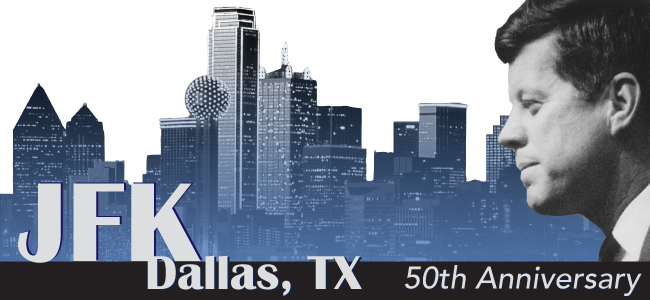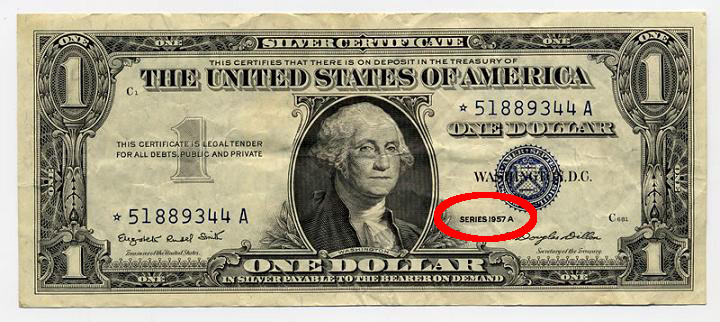
With the 50th Anniversary of the unfortunate events of November 22nd, 1963 fresh in the rear view mirror of public consciousness, I thought I’d take a moment (albeit a delayed one) to tackle an oft-cited fable from the Kennedy Administration that simply refuses to die. Readers have most likely heard the tale before, but for the sake of thoroughness, it can be roughly summarized as such: The dashing, youthful 35th President of the Republic, in an attempt to wrestle control of the nation’s money away from the Federal Reserve, engaged in a Jacksonian monetary rebellion by attempting to issue Treasury notes redeemable in silver. This act, say proponents of the theory, would have single-handedly saved America from rule by Central Bank decree, and was ultimately the reason for JFK’s untimely demise.
I am, of course, referring to the legend of Executive Order 11110. There’s just one problem: It’s not true.
I would like to preface this article by noting that far more intelligent (not to mention famous) people than I have tumbled down this dangerously situated rabbit hole. Louis Farrakhan made the tale reverberate from his pulpit. Russia Today’s eccentric economic analyst, Max Keiser, has promoted the historical meme on his show, The Keiser Report. Even Chris Duane’s must-watch Silver Bullet Silver Shield series on YouTube propagates the theory, and for the better part of my “awakened” existence, I, too, believed in the David and Goliath-esque tragedy as presented by so many in the alternative media. However, the instant this story is held up to the bright light of historical scrutiny, it not only falls apart, but is turned on its head entirely.
The historical lineage of the silver certificate program does not begin in 1963, but rather in 1873, with the passage of the Coinage Act, begrudgingly referred to as the “Crime of ’73″ by its opponents. The Coinage Act, despite vehement protest from members of the Democratic Party’s Free Silver movement like William Jennings Bryan, placed the country on a Gold Standard at the behest of the Eastern Establishment financiers. With this act, the bimetallic standard enshrined in the Constitution became a historical footnote; silver, which had traditionally been the preferred money of the working class, was now de-monetized, leaving control of America’s financial ledger to a small cadre of oligarchs with unprecedented gold holdings. While bimetallism and its fixed gold-silver exchange rate was by no means a perfect system, it did, at the very least, offer some form of monetary competition.
“If they dare to come out in the open field and defend the gold standard as a good thing, we will fight them to the uttermost. Having behind us the producing masses of this nation and the world, supported by the commercial interests, the laboring interests and the toilers everywhere, we will answer their demand for a gold standard by saying to them:
You shall not press down upon the brow of labor this crown of thorns, you shall not crucify mankind upon a cross of gold.” -William Jennings Bryan
It didn’t take long before Free Silverites struck back. Just five years after the Crime of ’73, Congress passed the Bland-Allison Act, overriding the veto of then-President Rutherford B. Hayes. While a far cry from the “free and unlimited coinage of silver” originally called for by Free Silver supporters, Bland-Allison did require the Treasury to purchase between $2 and $4 million in silver bullion from Western miners to circulate alongside gold. These precious metals not only circulated as 90% pure coinage, but also in the form of Treasury-issued (and later, in the case of gold, Fed-issued) certificates, 100% redeemable in the shiny stuff itself. With the exception of a change in the size of the notes in 1928, the silver certificate program continued unhindered for nearly 85 years, outliving its gold counterpart by three decades. For those still mired in disbelief, I offer this primary evidence, a silver certificate dated “Series 1957,” printed three years before JFK’s eventual Presidential bid:

So if JFK’s infamous Executive Order 11110 didn’t call for the triumphant return of an already existing program, what exactly did it do? The answer may surprise you, and it comes directly from the mouth of Kennedy himself:
“I again urge a revision in our silver policy to reflect the status of silver as a metal for which there is an expanding industrial demand. Except for its use in coins, silver serves no useful monetary function. In 1961, at my direction, sales of silver were suspended by the Secretary of the Treasury. As further steps, I recommend repeal of those Acts that oblige the Treasury to support the price of silver; and repeal of the special 50-percent tax on transfers of interest in silver and authorization for the Federal Reserve System to issue notes in denominations of $1, so as to make possible the gradual withdrawal of silver certificates from circulation and the use of the silver thus released for coinage purposes. I urge the Congress to take prompt action on these recommended changes.” -John F. Kennedy
In an ironic twist of fate, the silver half dollar that would later bear Kennedy’s visage became vulnerable to debasement via the very Executive Order which made him famous in Austrian economic circles; obviously undue fame, as the history of Executive Order 11110 seems to have been posthumously retrofitted to suit a political agenda. Whether or not this historical revision was inserted into the public dialogue wittingly or unwittingly, it would behoove a community which so often dons the monicker of Truth to take note of Executive Order 11110′s actual history as juxtaposed to the romanticized version so many cling to.
But it doesn’t stop there. Executive Order 11110 placed the power to print silver certificates firmly in the hands of the Secretary of the Treasury, a man by the name of C. Douglas Dillon. After graduating magna cum laude at Harvard University in 1931, Dillon went on to make his fortune at Dillon, Read & Co., his father’s investment banking firm. Interestingly enough, it is around this time that Dillon became an active force in Republican politics, in which his choice of political allies serves to enumerate a pattern of co-dependence with some rather unsavory characters. In addition to working intimately with John Foster Dulles during various political campaigns, Dillon was also a close and lifelong friend of John D. Rockefeller III. A passing glance at the resume of C. Douglas Dillon should invoke a series of red flags to any student of sound money (or history, for that matter):
- Chairman of the Rockefeller Foundation from 1972 to 1975
- Chairman of the Brookings Institution
- Vice Chairman of the Council on Foreign Relations
Clearly, Mr. Dillon was not the type to find sympathy with supporters of a “barbarous” relic like silver, much less the struggles of the earlier Free Silver movement. Given his list of friends, it may even stand to reason that Dillon’s allegiance to the workings of what Professor Peter Dale Scott terms “Deep Politics” put him inherently at odds with Kennedy, though this point is purely speculative. Regardless, Dillon was certainly not the man to implement some hypothetical coup d’état on the Federal Reserve; that much is abundantly clear.
I write this article not just for the reclamation of history, nor for the banal act of “debunking” a particular JFK assassination theory. For the record, I am no more a believer in the fictitious Warren Report findings than I am in the Executive Order 11110 myth. There exists a litany of excellent research on why Kennedy was murdered and at whose behest, this recent episode of Peace Revolution being one such study on the matter. I publish this article chiefly as a word of caution to conspiratologists and historical researchers alike. Don’t cut corners. Read primary documents yourself, digest them thoroughly, and draw conclusions based on fact alone, regardless of the pervading consensus of the time. You may just come to find that certain long-held historical conceptions have little basis in reality.


